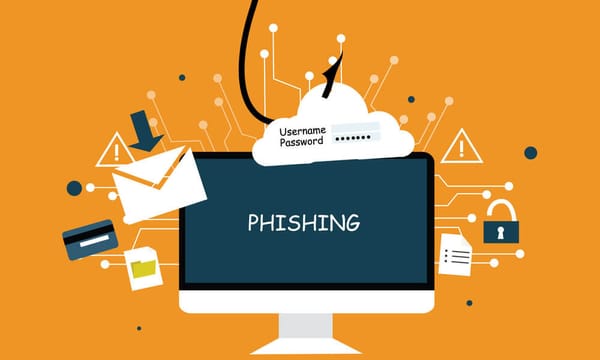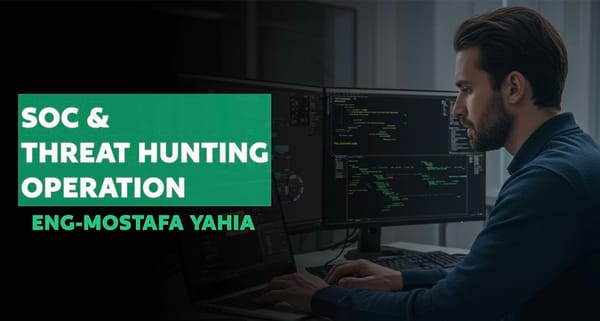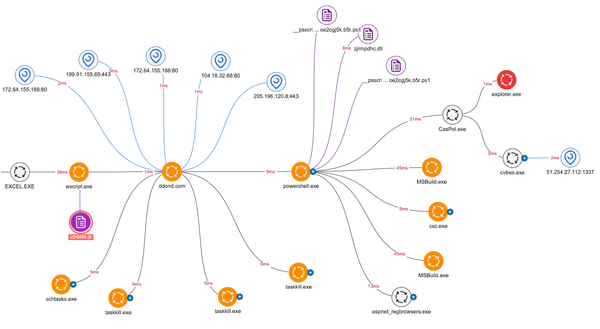Advanced Threat Intelligence: From Collection to Actionable Defense Strategies

In today's rapidly evolving threat landscape, organizations face increasingly sophisticated adversaries who continually adapt their tactics, techniques, and procedures (TTPs). Threat intelligence has emerged as an essential component of a mature cybersecurity program, providing the contextual information necessary to make informed security decisions. However, many organizations struggle to transform raw threat data into actionable intelligence that drives meaningful security improvements. This article explores advanced threat intelligence methodologies, implementation strategies, and practical applications for security operations teams.
Understanding the Threat Intelligence Lifecycle
Threat intelligence is not merely a feed of indicators or a list of potential threats; it's a structured process that transforms raw data into actionable insights. The intelligence lifecycle consists of several critical phases that must be properly executed to deliver value.
Requirements Definition
Every effective threat intelligence program begins with clearly defined intelligence requirements. These requirements should:
- Align with specific business objectives and risk profiles
- Address known security gaps within the organization
- Focus on threat actors and TTPs relevant to your industry
- Prioritize intelligence needs based on potential impact
Without proper requirements, intelligence efforts may produce interesting but ultimately unusable information. Security leaders must collaborate with business stakeholders to identify what intelligence will drive meaningful security decisions.
Collection Strategy
Once requirements are established, organizations must implement a comprehensive collection strategy spanning multiple sources:
- Technical sources: Includes feeds of indicators, vulnerability databases, and malware repositories
- Open-source intelligence (OSINT): Information gathered from publicly available sources like forums, social media, and news
- Human intelligence: Insights from industry contacts, security researchers, and internal subject matter experts
- Dark web monitoring: Surveillance of underground forums, marketplaces, and communication channels
A diversified collection approach provides broader visibility into the threat landscape, reducing blind spots that might leave the organization vulnerable to emerging threats.
Processing and Analysis
Raw threat data must be processed and analyzed to transform it into actionable intelligence. This phase involves:
- Data normalization: Standardizing formats and taxonomies
- Enrichment: Adding context from additional sources
- Correlation: Identifying relationships between disparate data points
- Analytical frameworks: Applying methodologies like the Diamond Model or MITRE ATT&CK to structure analysis
The analysis phase represents the most significant value-add in the intelligence process, as it transforms data into contextualized insights that enable decision-making. Advanced threat hunting techniques often leverage these analytical processes to identify previously unknown threats within the environment.
Dissemination
Intelligence must reach the right stakeholders in formats that support their specific needs:
- Executive briefings: Strategic intelligence for leadership teams
- Technical reports: Detailed analysis for security operations teams
- Tactical feeds: Machine-readable intelligence for security tools
- Intelligence dashboards: Real-time visibility into relevant threats
Effective dissemination ensures that intelligence reaches the people and systems that can act upon it, in formats that facilitate quick understanding and implementation.
Feedback and Refinement
The final phase of the intelligence lifecycle involves gathering feedback to continuously improve the process:
- Tracking intelligence utilization and impact
- Identifying intelligence gaps
- Refining requirements based on operational outcomes
- Adjusting collection and analysis methods
This feedback loop ensures that threat intelligence programs remain aligned with organizational needs and continue to deliver measurable security value.
Building a Strategic Threat Intelligence Program
Intelligence Requirements Process
Developing structured intelligence requirements requires a methodical approach:
- Identify key stakeholders across security and business functions
- Conduct risk assessment workshops to identify critical assets and concerns
- Document prioritized intelligence requirements using frameworks like PIRs (Priority Intelligence Requirements)
- Establish regular review cycles to update requirements as threats evolve
This process ensures that intelligence efforts remain focused on the organization's most significant risks and security priorities.
Threat Intelligence Platform Selection
A dedicated Threat Intelligence Platform (TIP) serves as the central nervous system for intelligence operations. Key considerations when selecting a TIP include:
- Integration capabilities with existing security tools
- Analytical workflows that support collaborative analysis
- Visualization features for complex relationship mapping
- Automation capabilities for routine intelligence tasks
- Customizable taxonomies to align with organizational frameworks
Leading platforms like ThreatQuotient, Anomali, and MISP offer varying capabilities that should be evaluated based on organizational requirements and maturity levels.
Threat Intelligence Staffing Models
Building an effective threat intelligence team requires a mix of technical and analytical skills:
- Intelligence analysts: Focus on strategic and operational analysis
- Technical intelligence specialists: Handle tactical intelligence and integrations
- Subject matter experts: Provide industry-specific context and insights
- Collection specialists: Manage diverse intelligence sources
Organizations should consider their intelligence requirements, budget constraints, and existing security capabilities when determining the optimal staffing model. Hybrid approaches often combine internal resources with external intelligence services to achieve comprehensive coverage.
Operationalizing Threat Intelligence
Integration with Security Operations
Threat intelligence delivers the greatest value when seamlessly integrated with security operations. Key integration points include:
- Security Information and Event Management (SIEM): Enriching alerts with threat context
- Endpoint Detection and Response (EDR): Enhancing detection capabilities with threat indicators
- Vulnerability Management: Prioritizing remediation based on threat activity
- Security Orchestration and Automation (SOAR): Triggering automated responses to known threats
These integrations enable security teams to move from reactive to proactive defense postures by leveraging intelligence to anticipate and intercept threats before they impact the organization. Effective SOC architecture should incorporate threat intelligence as a core component of detection and response capabilities.
Threat Hunting Use Cases
Advanced organizations leverage threat intelligence to power proactive threat hunting initiatives:
- TTP-based hunting: Searching for evidence of known adversary techniques
- Industry threat hunting: Investigating threats targeting specific sectors
- Campaign tracking: Monitoring for indicators associated with active campaigns
- Emerging threat hunts: Investigating newly discovered vulnerabilities or attack vectors
By combining threat intelligence with internal telemetry, threat hunters can identify malicious activity that might otherwise evade automated detection systems. This approach is particularly effective against sophisticated adversaries who adapt their techniques to bypass traditional security controls.
Incident Response Enhancement
Threat intelligence significantly enhances incident response capabilities through:
- Attack attribution: Identifying the likely threat actors behind attacks
- Scope determination: Understanding the potential breadth of compromise
- Response prioritization: Focusing efforts based on adversary capabilities and intent
- Strategic remediation: Implementing controls that address the root techniques used
When integrated into the incident response process, threat intelligence provides context that enables more effective and efficient response actions, reducing both mean time to detect (MTTD) and mean time to respond (MTTR).
Advanced Threat Intelligence Applications
Adversary Emulation
Mature organizations use threat intelligence to conduct adversary emulation exercises that test defenses against specific threat actors:
- Select relevant threat actors based on industry targeting
- Extract TTPs from intelligence reports and frameworks
- Develop emulation plans that mirror adversary behaviors
- Execute controlled attacks against production environments
- Measure detection and response effectiveness
These exercises provide realistic validation of security controls against the actual techniques employed by relevant threat actors. Purple team exercises that incorporate threat intelligence deliver particularly valuable insights into defensive capabilities.
Threat-Informed Defense
The concept of threat-informed defense uses intelligence to guide strategic security investments:
- Defensive gap analysis: Identifying control gaps based on relevant threat activity
- Control prioritization: Focusing on defenses that counter likely attack scenarios
- Architectural decisions: Designing security architecture to address specific threats
- Detection engineering: Developing detection rules based on adversary techniques
This approach ensures that security resources are allocated to controls that address the most relevant threats, maximizing the return on security investments.
Intelligence-Driven Risk Management
Advanced threat intelligence enables more accurate risk assessment and management:
- Threat-based risk scoring: Incorporating threat activity into vulnerability prioritization
- Strategic risk forecasting: Anticipating emerging threats based on intelligence trends
- Quantitative risk models: Using intelligence to inform likelihood estimates
- Board-level risk reporting: Communicating threat-informed risk to leadership
By incorporating threat intelligence into risk management processes, organizations can make more informed decisions about risk acceptance, mitigation, and transfer strategies.
Measuring Threat Intelligence Effectiveness
Quantitative Metrics
Measuring the effectiveness of threat intelligence programs requires a combination of operational and strategic metrics:
- Intelligence production metrics:
- Number of intelligence products created
- Time from collection to dissemination
- Coverage of priority intelligence requirements
- Operational impact metrics:
- Reduction in mean time to detect
- Alerts enriched with intelligence context
- Prevented incidents based on intelligence
- Strategic value metrics:
- Security investments influenced by intelligence
- Risk reduction attributable to intelligence
- Board decisions supported by intelligence
These metrics should be regularly reported to stakeholders to demonstrate the value of threat intelligence investments and guide program improvements.
Qualitative Assessment
Not all intelligence value can be captured through quantitative metrics. Qualitative assessments should also consider:
- Stakeholder satisfaction with intelligence products
- Decision support effectiveness for key security decisions
- Intelligence accuracy over time
- Contextual relevance to the organization's specific environment
Regular feedback sessions with intelligence consumers provide valuable insights into the practical utility of intelligence products and services.
Case Study: Detecting Supply Chain Compromises
The SolarWinds incident demonstrated the critical importance of advanced threat intelligence in detecting sophisticated supply chain attacks. Organizations with mature threat intelligence capabilities were able to:
- Rapidly incorporate early indicators into detection systems
- Conduct targeted hunts for compromise artifacts
- Implement defensive measures based on emerging TTPs
- Make informed decisions about incident response priorities
This incident highlighted how threat intelligence sharing between public and private sector organizations creates collective defense capabilities that benefit the entire security community. Organizations that participated in information sharing initiatives like the Cyber Threat Alliance received early warnings that accelerated their detection and response efforts.
Implementing Threat Intelligence for Different Maturity Levels
Starting a Threat Intelligence Program
Organizations new to threat intelligence should begin with foundational capabilities:
- Focus on tactical intelligence that supports existing security functions
- Leverage open-source intelligence feeds to minimize initial investment
- Integrate intelligence with key security tools like firewalls and EDR
- Establish basic intelligence requirements based on critical assets
- Build intelligence awareness among security staff
These steps establish the infrastructure and processes necessary for more advanced intelligence operations as the program matures.
Intermediate Capabilities
As threat intelligence programs evolve, organizations should expand their capabilities:
- Develop internal analysis capabilities beyond feed consumption
- Implement a dedicated threat intelligence platform
- Establish formal intelligence requirements processes
- Integrate intelligence across security functions
- Begin targeted collection efforts for specific threat areas
These enhancements transform basic threat data consumption into true intelligence production and application.
Advanced Implementation
Mature threat intelligence programs typically include:
- Dedicated intelligence teams with specialized roles
- Custom collection capabilities targeting specific threat actors
- Advanced analytical methodologies and frameworks
- Original intelligence production beyond third-party sources
- Strategic intelligence driving security strategy and investments
At this level, threat intelligence becomes a core strategic function that influences decisions across the security organization and broader business.
The Future of Threat Intelligence
Emerging Trends
Several trends are reshaping the threat intelligence landscape:
- AI-powered analysis: Machine learning algorithms that identify patterns and relationships in vast datasets
- Automated intelligence production: Systems that generate preliminary analysis and reports
- Collective defense models: Cross-organization intelligence sharing and collaborative defense
- Intelligence fusion centers: Centralized intelligence operations supporting multiple business units
- Adversary behavior modeling: Predictive analytics for anticipating threat actor movements
These innovations promise to enhance both the scale and sophistication of threat intelligence capabilities, enabling more proactive security postures.
Challenges and Considerations
Despite its potential, threat intelligence faces ongoing challenges:
- Signal-to-noise ratio: Distinguishing valuable intelligence from background noise
- Attribution difficulties: Accurately identifying threat actors despite deception
- Intelligence sharing barriers: Legal and competitive concerns limiting collaboration
- Skills shortages: Limited availability of trained intelligence analysts
- Measuring ROI: Demonstrating concrete returns on intelligence investments
Organizations must address these challenges to realize the full potential of their threat intelligence programs.
Conclusion
Threat intelligence has evolved from simple indicator sharing to a sophisticated discipline that provides essential context for security decisions at all levels. By implementing a structured approach to intelligence requirements, collection, analysis, and dissemination, organizations can transform raw threat data into actionable insights that enable more effective defense.
The most successful threat intelligence programs focus on delivering relevant, timely, and actionable intelligence to stakeholders across the organization. This intelligence-driven approach allows security teams to anticipate threats, prioritize defenses, and respond more effectively to incidents when they occur.
As threat landscapes continue to evolve, threat intelligence will remain a critical capability for organizations seeking to understand and counter increasingly sophisticated adversaries. By investing in intelligence capabilities that align with business objectives and security priorities, organizations can develop the contextual awareness necessary to defend against tomorrow's threats.
For security professionals looking to enhance their threat hunting capabilities, combining advanced threat intelligence with proactive hunting methodologies creates a powerful approach to identifying sophisticated threats before they impact critical assets.




